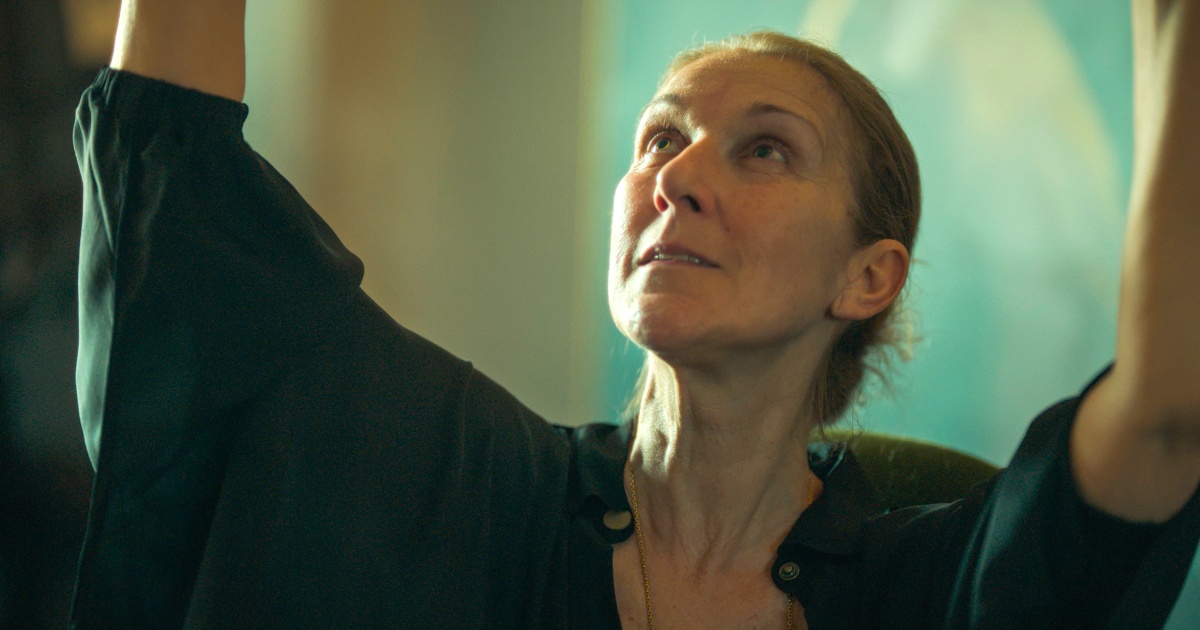
World-renowned singer Celine Dion shared a vulnerable moment of her experience with stiff-person syndrome in a raw scene in the new documentary “I Am: Celine Dion.”
The film, released Tuesday on Prime Video, shows Dion, 56, suffering a severe spasm during a physical therapy session. Lying on a table on her side, Dion freezes and starts to cry as she shakes slightly and whimpers in pain.
Dion revealed in December 2022 that she had been diagnosed with the rare neurological disease, which can cause painful spasms and difficulty walking. In the documentary, viewers see her going through one of those hard moments.
The footage shows a physical therapist talking Dion through the spasm and asking her to squeeze his hand if she is in pain. He gives her a nasal spray after having noted that she is breathing abnormally. He and others in the room discuss whether to call 911 if another spasm were to start, but Dion weakly reassures them, saying, “I’m OK.”
It was a candid moment for Dion — one she insisted on keeping in the film. When Dion was shown a rough cut six months after the spasm, she told director Irene Taylor, “Don’t cut down that scene,” Taylor told the Los Angeles Times.
In the documentary, Dion revealed she has been living with symptoms of the condition for 17 years.
What is stiff-person syndrome?
Stiff-person syndrome is an autoimmune and neurological condition that affects roughly 1 or 2 out of every 1 million people.
Symptoms include stiffening in the torso and limbs, along with severe muscle spasm episodes. The spasms can occur at random or be triggered by certain stimuli, including loud noises, touch or emotional distress.
Dr. Jennifer Hankenson, a doctor at Yale Medicine who sees patients with stiff-person syndrome, said people with the condition have low amounts of a chemical in the brain called GABA, which plays a role in controlling anxiety and emotional responses, as well as muscle movement.
With low amounts of GABA, a spasm can occur that makes the muscles very tense, she said. Such spasms can start in a particular muscle and then spread throughout the body.
“So when a patient gets very excited, very stressed-out, there’s a loud noise or banging around them, it can be a very small trigger, but it may bring on one of those episodes where unfortunately everything starts to spasm,” Hankenson said. “And when it happens, it can be incredibly painful for the patient.”
Spasms can last several seconds or minutes, or they can be prolonged, she added.
There’s no cure for stiff-person syndrome. Doctors focus on relieving symptoms using medications such as sedatives, muscle relaxants and steroids. Immunotherapies, like infusions of immunoglobulin, have also been shown to reduce people’s stiffness and sensitivity to noise, touch and stress.
Physical and aqua therapies can help patients, as well.
It’s not clear why some people develop stiff-person syndrome, and more research is needed, Hankenson said.
“Luckily, it’s very rare. For those who do develop the symptoms, it may start with certain muscle spasms in their body or sometimes affecting even things like speaking, talking. And that usually progresses to more violent episodes of those muscle spasms,” she said.
What was happening in that scene?
Dion’s physician, Dr. Amanda Piquet, is the director of the autoimmune neurology program at the University of Colorado Anschutz Medical Campus. She told TODAY.com that the documentary scene shows a spasm that started in Dion’s foot and then took over her body.
“That anxiety, that panic, that continued spasm that was not breaking, then very quickly triggered just a complete whole-body spasm,” she said.
The nasal spray Dion was given was benzodiazepine, a depressant drug that relieves anxiety and reduces muscle spasms.
Piquet clarified that what Dion experienced was not a seizure.
“This is a spasm that is occurring, and patients are aware of what’s going on. There’s a lot of anxiety; there’s a lot of panic; your adrenaline’s rushing,” she said.
Hankenson, who watched the documentary, described the spasm Dion endured as “an extreme episode.”
“Unfortunately, if [patients] are put in the right environment or stressed a certain level, that can be the intensity of the body’s response. It can even potentially last several hours or more and put your body in a state of crisis that actually could lead to hospitalization,” she said.
In the documentary, Dion says after the spasm: “Every time something like this happens, it makes you feel so embarrassed. So, like, I don’t know how to express it … like to not have control of yourself.”
Hankenson praised Dion for her bravery in sharing the episode with the public.
“Celine Dion being so open about her journey and experiences, she’s put light on stiff-person syndrome, and hopefully this will lead to additional resources for ongoing research,” she said.
Dion’s story may offer some hope, as well, Hankenson added: “There’s a lot of recovery that she has experienced. I think it also shows other patients who may have stiff-person syndrome that not everybody is debilitated and not everybody is unable to gain some recovery.”






